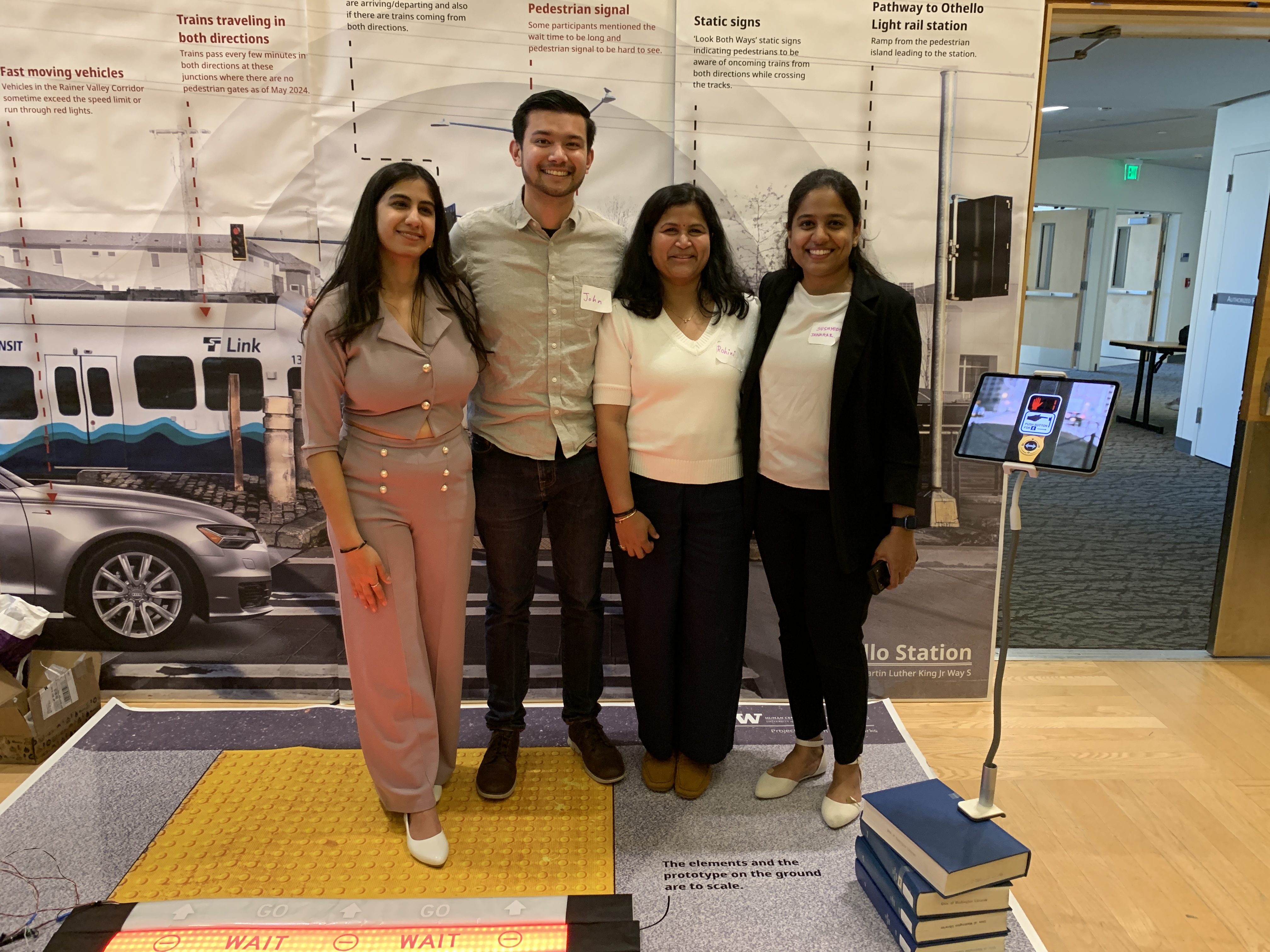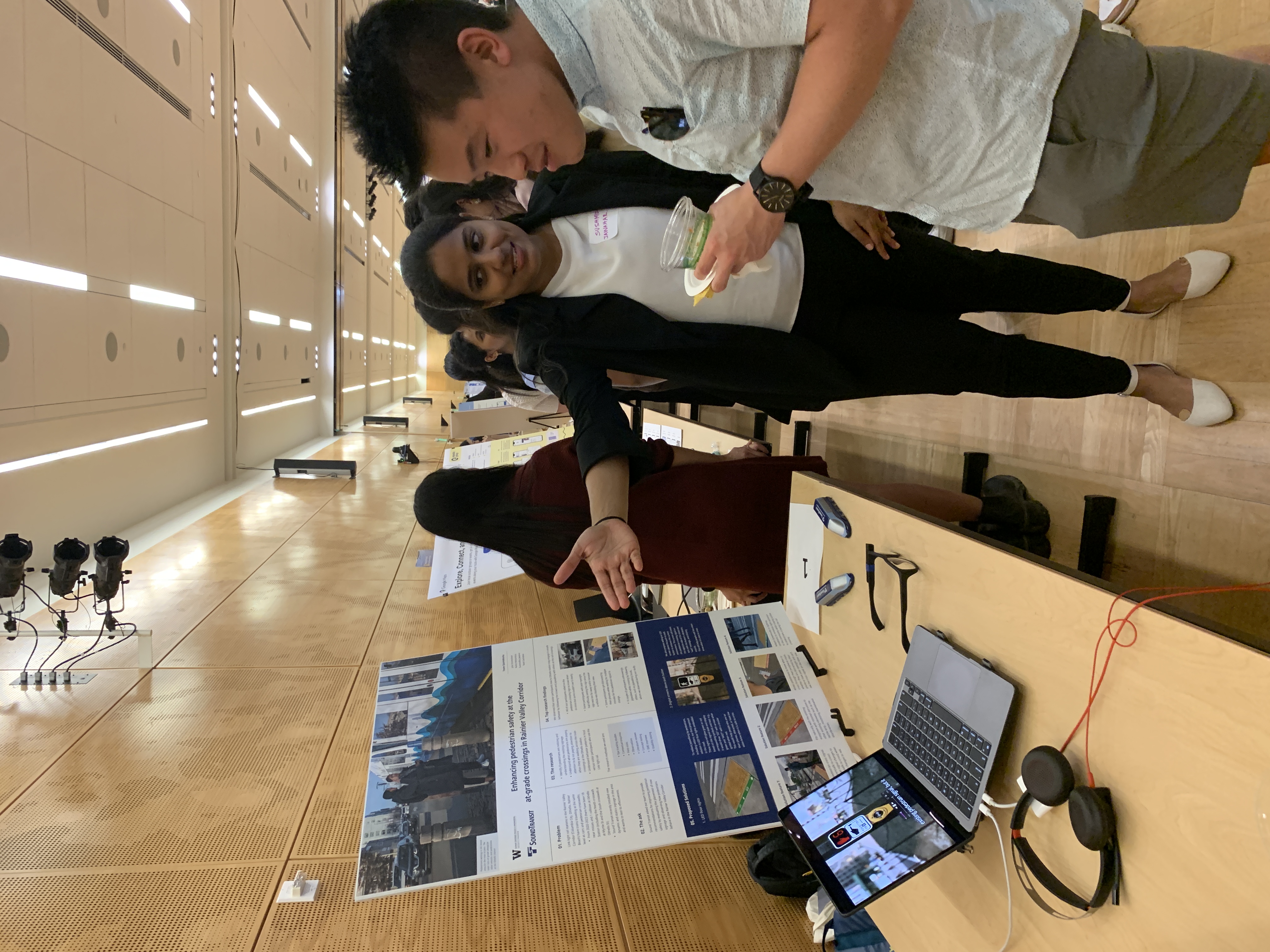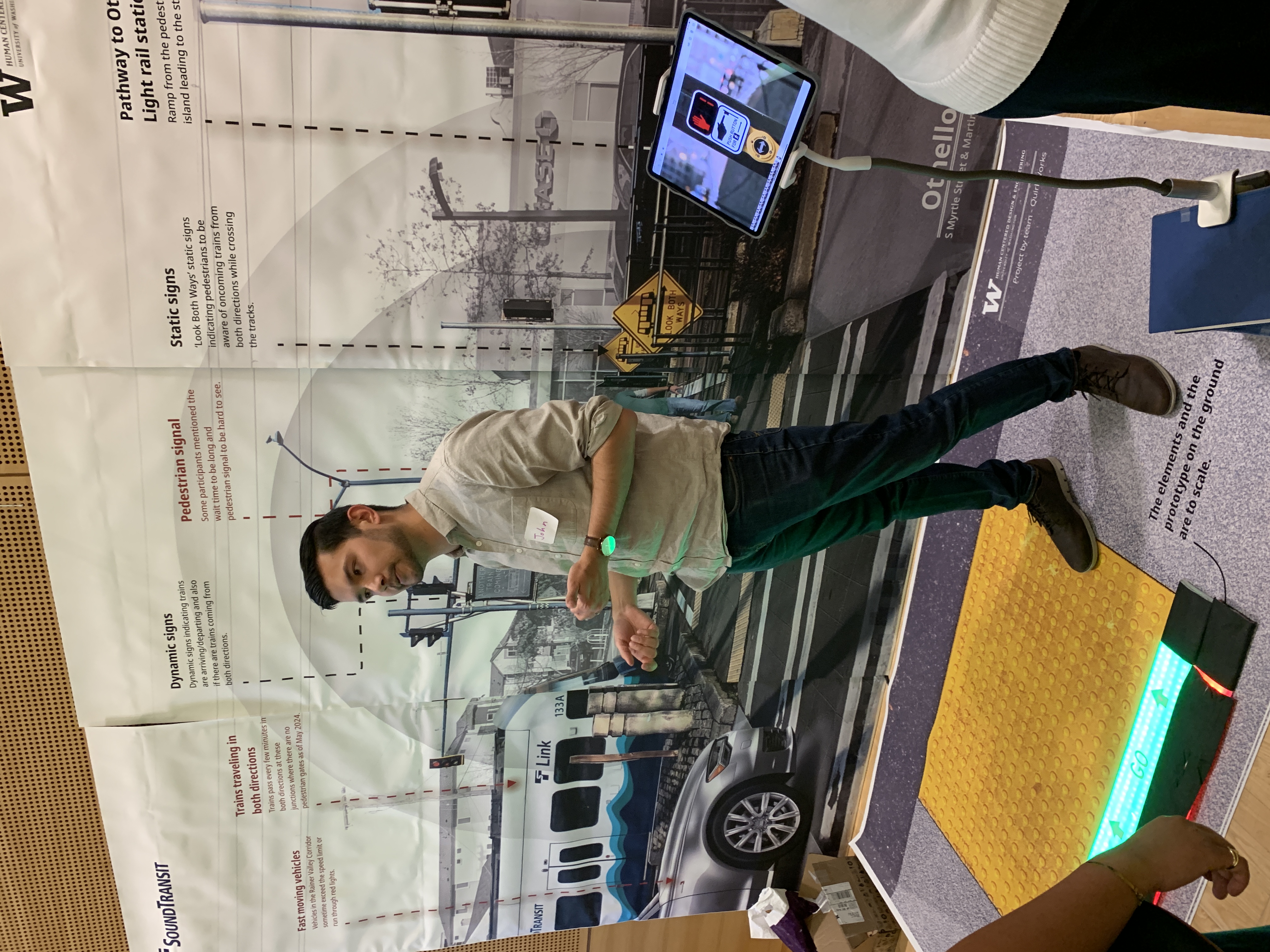Sound Transit
Eye-Tracking: At-Grade Crossing Safety
Sound Transit has been investigating system-wide strategies to enhance the safety of at-grade crossings, which are any location where a road or pedestrian pathway crosses the rail tracks. This student team worked closely with Sound Transit to thoroughly evaluate existing design and placement of Link light rail signage in the Rainier Valley Corridor and applied innovative research methodologies (e.g., eye-tracking) to understand passenger/pedestrian behavior. Students also worked to draw upon secondary research from peer agencies and best practices to build an understanding of industry best practices of at-grade crossings. Students worked to build the domain specific knowledge and to utilize UX and Human Factors research and design principles to brainstorm, prototype, and validate a solution to enhance safety at at-grade crossings. The designed solution this student team worked to consider included the following requirements: - Built on an understanding of real-world users needs and challenges - Comprehensible to people from different cultural backgrounds and with different levels of English proficiency - Works for users with different mobility impairments and physical disabilities - Closely follows human factors and user-centered design principles to design the best experience The deliverables this student team worked to achieve include: - Research documentation, summaries, actionable insights, and recommendations - Secondary research: Heuristic evaluation of MUTCD standards and the current state of at-grade crossing features; review of industry best practices, peer agencies, and related literature; UX and human factors evaluation - Primary research: Qualitative studies, building persona and journey map, and conducting eye-tracking research at at-grade crossings - Design enhancement ideas, validation research report, and final presentation - Prototyping: Design and prototype enhancement ideas - Design validation: User testing (including eye-tracking studies), iteration, and recommend a final design
Faculty Adviser
Daniela Rosner,
Associate Professor,
Human Centered Design & Engineering
Students
Josh Strohschein
Rohini Mohandoss
Sushmidha Jawahar
Swati Sachdeva
Related News

Fri, 09/20/2024 | UW Civil & Environmental Engineering
Smarter irrigation for a greener UW
A new project combines satellite data with ground sensors to conserve water and create a more sustainable campus environment.
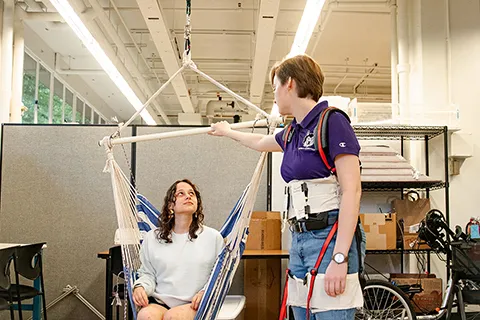
Mon, 09/09/2024 | UW Mechanical Engineering
Testing an in-home mobility system
Through innovative capstone projects, engineering students worked with community members on an adaptable mobility system.
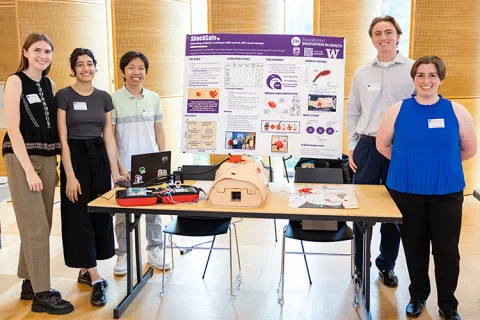
Mon, 08/19/2024 | UW Mechanical Engineering
Students strive to ensure accurate AED shock dosage
ShockSafe, developed by students with the help of mentors from Philips and Engineering Innovation in Health (EIH), can distinguish between children and adults during cardiac arrest emergencies.

Wed, 08/07/2024 | Snohomish County News
Snohomish County, University of Washington partnership boosts efficiency in enterprise scanning center
UW Industrial and Systems Engineering Capstone Project set to save Snohomish County over $40,000 annually.
